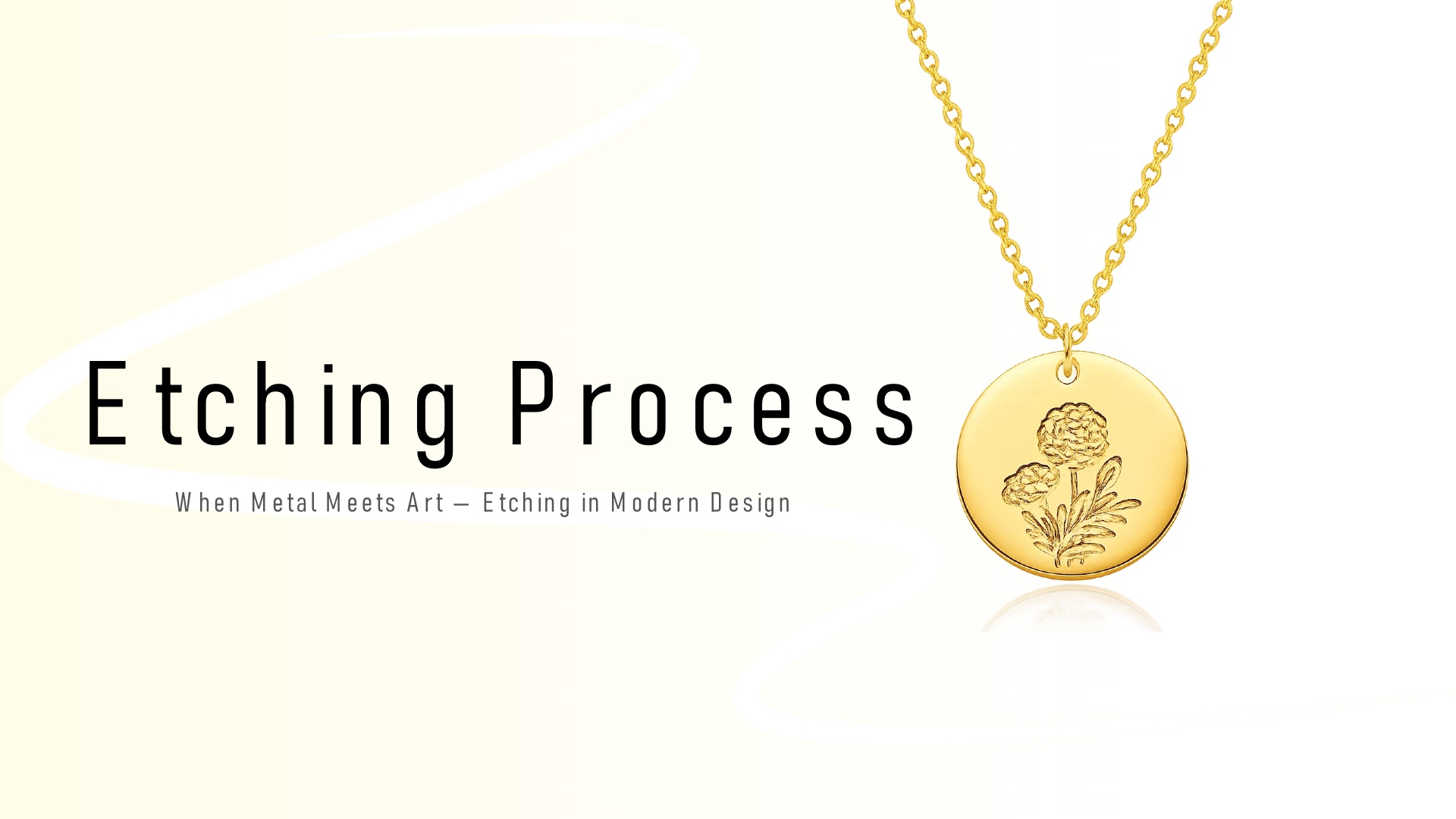
Sometimes, the tiniest lines on a metal surface make the biggest difference in how a product looks and feels. In OEM manufacturing, precision isn’t just a requirement — it’s a language. Etching technology is one of the most precise ways to communicate that language, combining chemistry, materials science, and careful craftsmanship. At Yibi, we love turning chemical reactions into beautiful, precise details.
In simple terms, etching is “controlled corrosion.” Only the parts of the metal you want to remove are dissolved, while the rest stays perfectly intact.
Imagine the metal as wearing an invisible protective coat — that’s the photoresist layer. It shields the areas you want to preserve. The etching solution then carefully removes the exposed parts, almost like a tiny cleaning crew following a very precise blueprint. The goal is simple but exacting: every line, every texture, every logo must come out clean and crisp.
OEM factories typically use three main etching methods, depending on the precision and purpose:
Chemical Etching – The classic method, highly efficient and perfect for logos, patterns, and decorative textures.
Electrolytic Etching – Uses electric current for sharper edges and better control over depth. Ideal when every micron matters.
Laser Etching – The ultimate precision tool, great for tiny logos, serial numbers, or intricate designs.
All three methods share one goal: to turn metal into a canvas where precision meets design.
Etching shows up in many parts of our daily life, and at OEM factories, it serves three main sectors:
Jewelry & Accessories – Tiny logos, delicate textures, subtle surface effects on silver, brass, or stainless steel pieces.
Fashion Hardware – Nameplates, zipper pulls, and metal tags that define brand identity.
Precision Components – Thin metal sheets, connectors, and micro-parts where even the smallest detail matters.
By combining etching with other processes, we can make each piece not just functional, but visually and tactilely appealing.
The etching process might sound complicated, but it’s a series of carefully controlled steps:
1. Cleaning – Degreasing the metal so nothing interferes with the etch.
2. Photoresist Coating – Applying the protective layer where the metal should remain.
3. Exposure & Development – Transferring the pattern onto the metal.
4. Etching – Letting chemistry or electricity do its precise work.
5. De-masking & Cleaning – Removing protective layers and residues.
6. Surface Finishing – Polishing, plating, or coating to finalize the look.
Think of it like baking a layered cake — each step must be executed correctly to achieve the final result. Temperature, etching time, and chemical composition are closely monitored so that every piece comes out looking exactly as intended.
After etching, additional finishing steps bring the piece to life. Polishing smooths edges, plating adds shine or color, and coatings protect against wear. Etching gives the structure, plating gives the shine, and polishing gives the final wow factor. Combined, these steps ensure the piece is both beautiful and durable.
Etching is where science meets craft. It’s tiny details, done perfectly, that make products stand out. At Yibi, we love every line we etch — because every detail tells a story. From a jewelry pendant to a fashion hardware component, the precision and care we put into etching reflect our commitment to quality and craftsmanship.
Whether it’s a micro logo or an intricate texture, etching transforms simple metal into a statement of design. In modern OEM manufacturing, it’s a process where technology, creativity, and careful control converge — and the results speak for themselves.